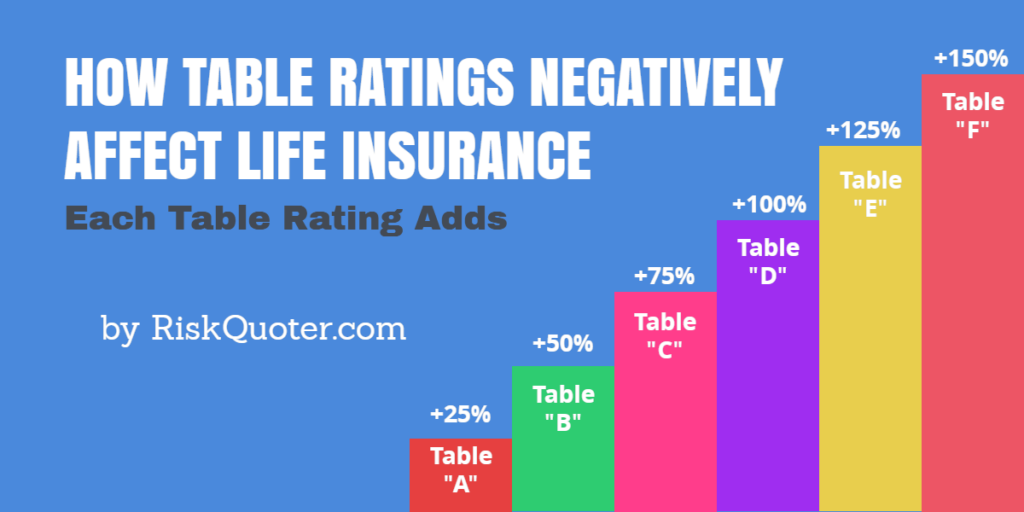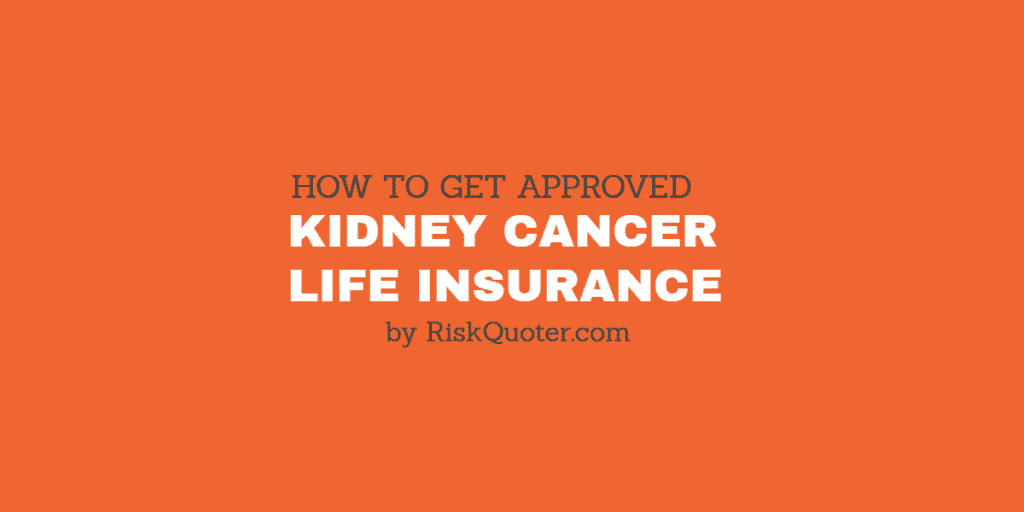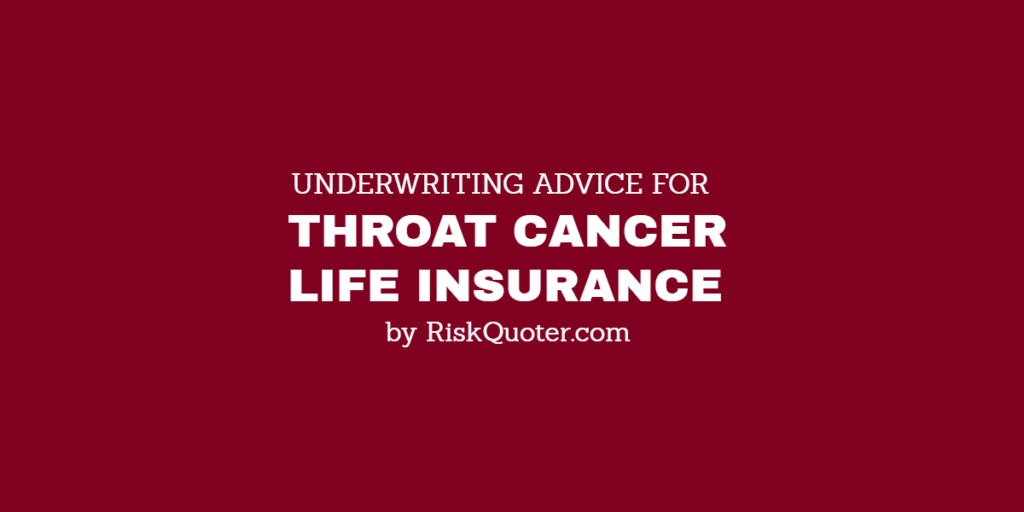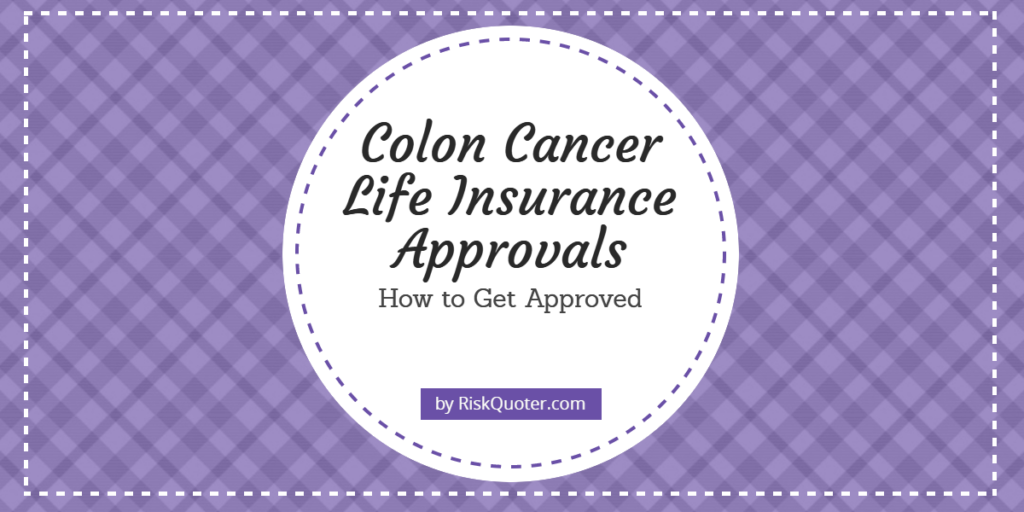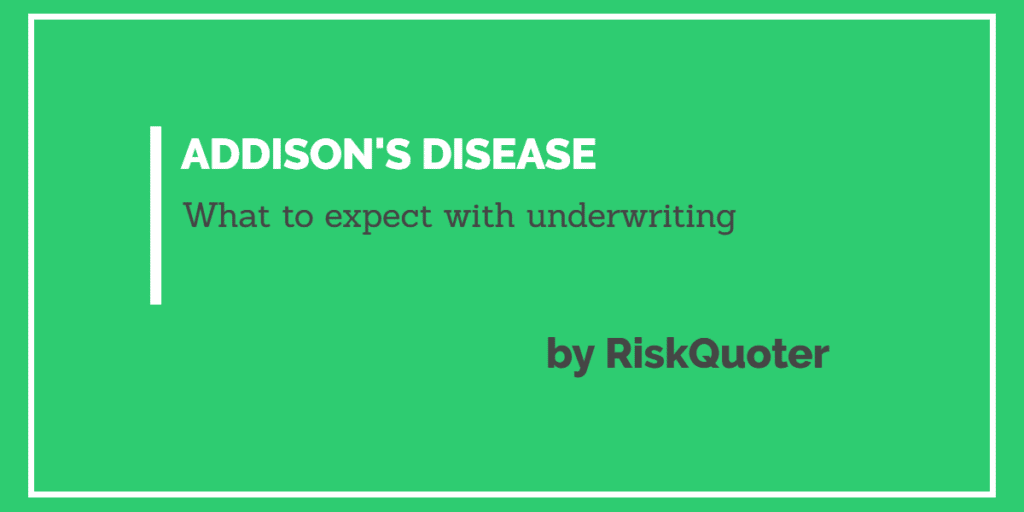While skin cancer is a common diagnosis, it can raise concerns when applying for life insurance. That’s where we can help.
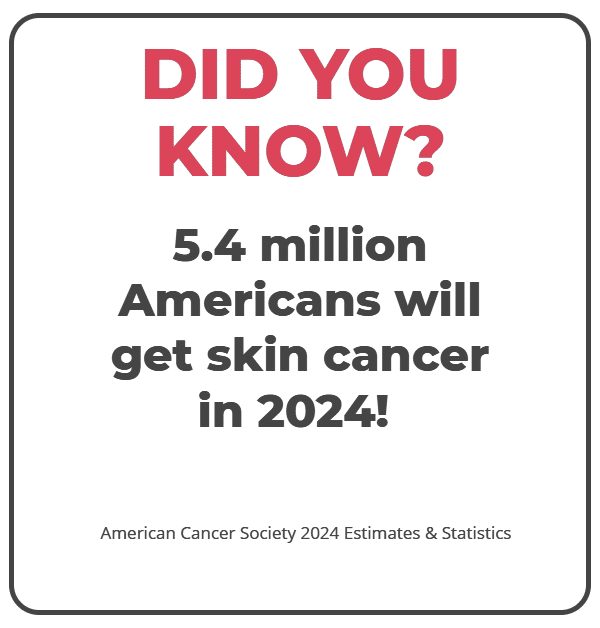
This guide explores how different types of skin cancer affect life insurance eligibility and offers advice on navigating the application and underwriting process.
At RiskQuoter, we can help you obtain affordable life insurance after skin cancer, even if you have previously been declined.
- Does Skin Cancer Affect Life Insurance?
- Can You Get Life Insurance After Melanoma?
- Types of malignant melanoma:
- How Does Melanoma Cancer Stage & Severity Affect Life Insurance?
- Melanoma Life Insurance Rate Chart
- Basal Cell Carcinoma Life Insurance
- Squamous Cell Carcinoma Life Insurance
- Pre-Cancerous Skin Conditions
- Skin Cancer Underwriting Questions
- Which Company is Best for Melanoma?
- FAQ
- Final Words
Does Skin Cancer Affect Life Insurance?
Yes, skin cancer can impact your life insurance rates depending on the severity.
Melanoma is the most severe type of skin cancer and requires high-risk underwriting expertise, while basal and squamous cell skin cancer have minimal impact on life insurance rates with the right companies.
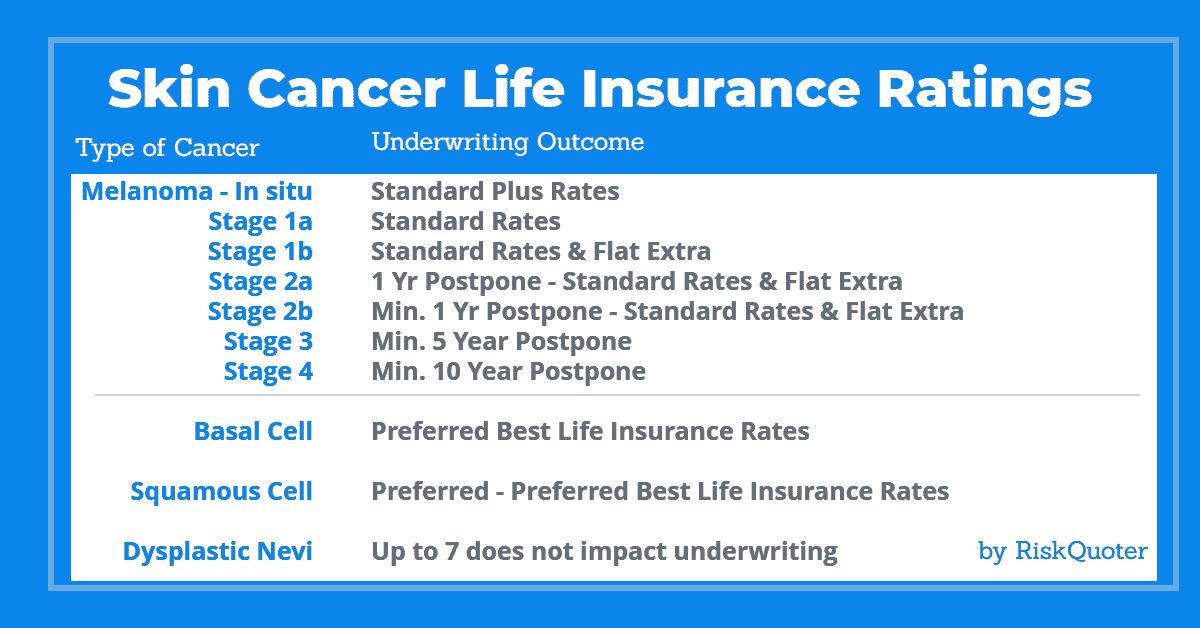
We explain everything you need to know to make an informed decision about your life insurance.
Can You Get Life Insurance After Melanoma?
Malignant melanoma is the most severe form of skin cancer.
With a malignant melanoma history, the availability of life insurance depends on the following factors:
- Type of melanoma
- Melanoma cancer stage, severity & treatment
- Time since diagnosis and completion of all treatment
An estimated 100,640 melanoma cases[2] will be diagnosed in America in 2024.
Types of malignant melanoma:
- Superficial spreading
- Nodular
- Lentigo maligna
- Acral lentiginous.
Superficial spreading melanoma comprises 70% [3] of all melanomas.
How Does Melanoma Cancer Stage & Severity Affect Life Insurance?
The following are general guidelines for various cancer stages and how life insurance availability and rates are impacted.
Melanoma In Situ
Standard life insurance rates are available after surgery. [4]
As more time passes since surgery, obtaining a standard plus rate may be possible.
In some rare cases, a preferred rate is available.
Client with Melanoma In Situ
We receive a lot of inquiries from people who were just diagnosed with skin cancer, as it rightfully scares you.
People want to know if they are insurable, when coverage will be available, and how much it will cost. For most people, we can give you that answer over the phone or email within minutes.
Here is an actual client of ours and their life insurance underwriting outcome:
- Female
- Age 53
- In Situ Melanoma at 52
- Size – 0.1 mm deep
- 1x Occurrence
- Excised with no further problems
- Prudential – Non-Smoker Plus
- Mutual of Omaha – Standard Plus
- Banner Life – Standard Plus
- Nationwide, Corebridge, John Hancock, SBLI, Protective, Pacific Life, Minnesota Life – Standard rates
- North American – Medical Director review
This is a pretty straightforward melanoma in situ case, with no further complications, dysplastic nevi, or positive surgical margins.
Banner Life, Mutual of Omaha, and Prudential have the best underwriting offers, with Banner’s rates being the most competitive.
Other companies like North American are not competitive for skin cancer life insurance.
Stage 1a Melanoma
Stage 1a melanoma is less than 1 millimeter (mm) in-depth and not ulcerated.
Life insurance is available at standard rates after surgery.
A Standard plus rate may be possible four years after surgery. [5]
Client with Stage T1a Melanoma
For most clients who have stage T1a melanoma, “standard” life insurance rates are available soon after surgery.
But, sometimes other factors affect underwriting significantly, such as this case.
Here is an actual client of ours with a T1a melanoma history and their life insurance underwriting outcome:
- Female
- Age 33
- In Situ Melanoma at 32
- Size – 0.3 mm deep
- 1x Occurrence
- Excised with no further problems
- Dysplastic Nevi – 5
- Prudential – Individual consideration
- Protective – Standard with $5×3 flat extra
- John Hancock – Table 4
- Lincoln – Table 2 plus $5×2 flat extra
- All other companies declined
What scared life insurance companies away is the young age of the insured, melanoma history, and five dysplastic nevi, which are precursors to future melanoma.
This case was for a $500,000 – 20-year term life. Although they were very different, Protective and John Hancock made the two best offers.
Protective offered a temporary flat extra of $5×3. Whenever you receive a flat extra, you should re-shop your coverage yearly because flat extras are expensive. In this case, we were looking at a rate of $2855 per year for three years, then $355 per year for years 4-20.
John Hancock offered a permanent table rating added to the price for all years. In this case, the rate would be $1062 per year for 20-years.
Which one do you choose? In this case, price is the big factor, so the insured went with the table-rated policy from John Hancock. We hope to be able to replace the policy in the future for a rate without a table rating.
Stage 1b Melanoma
Stage 1b melanoma is more significant than 0.8 mm thick and ulcerated.
Life insurance is available at standard rates after surgery but may include a flat extra charge.
The flat extra adds $500 – $750 per every $100,000 coverage and lasts five years. [4]
The presence of ulceration indicates that it is a more severe melanoma.
Client with Stage T1b Melanoma
Here is a client of ours with multiple melanoma history – T1b and in situ melanoma, and their life insurance underwriting outcome:
- Male
- Age 47
- T1b melanoma 5 years ago
- In Situ Melanoma 1 year ago
- Prudential – Table A plus $7.50×5
- Mutual of Omaha – Table 4 plus $15×3
- Lincoln – $5×3
- Corebridge – Table 4
When there is a history of multiple melanomas, underwriting becomes more complex as fewer companies are available to work with.
A similar client with one occurrence of melanoma at stage T1b could expect to see “standard” rates with the right companies.
Stage 2a Melanoma
Stage 2a melanoma is greater than 1mm but less than 2 mm thick.
There is no indication of ulceration with stage 2a melanoma.
Most life insurers will postpone coverage for one year after surgery.
A flat extra will be added to the policy when life insurance is available.
The flat extra lasts 5-7 years and adds $750 – $1,000 per every $100,000 coverage. [4]
Stage 2 melanoma cancer cells have not spread to nearby lymph nodes.
Client with Stage T2a melanoma history
Here is a client of ours with a stage T2a melanoma history
- Male
- Age 46
- T2a melanoma 4 years ago
- Surgically removed
- Lincoln – Standard
- Nationwide – $5×2
- Protective – $7×3
- Prudential – $7.50×2
- Corebridge – $5×2
- Symetra – $5×2
What also helped with this client was their consistent follow-ups with their doctor every six months.
Melanoma Stage 2b
Thickness is 1mm – 2mm in thickness.
Ulceration is present in the pathology report.
A flat extra of $1,000 per every $100,000 coverage is available after surgery with a few insurers. [4][6]
Most companies postpone coverage for one year or longer.
The flat extra may last for seven years or longer in some cases.
Please let us know if you have additional skin conditions, such as dysplastic nevi, as it will impact underwriting.
Stage 3 Melanoma
Stage 3 melanoma requires lengthy postponement periods of 5 years or longer from the completion date of all treatments.
Once life insurance is available, companies will add a life insurance table rating and a flat extra to the price.
The table ratings typically add 50% to the standard rate for the policy’s life.
The flat extra will add $1500 – $2000 per every $100,000 coverage you consider and may last 5-7 years. [4][6]
Stage 4 Melanoma
Life insurance is limited to the accidental death benefit and guaranteed issue life insurance policies.
Coverage amounts for a graded benefit guaranteed issue policy are limited to $25,000.
Accidental death benefit coverage is available for up to $500,000.
Melanoma Life Insurance Rate Chart
A quick summary of how melanoma impacts life insurance.
| Stage | Postpone? | Flat Extra | Likely Outcome? |
|---|---|---|---|
| In situ | No | No | Standard Plus |
| Stage 1a | No | No | Standard |
| Stage 1b | No | Possibly | Std + Flat Extra |
| Stage 2a | Yes | $750 – $1000 (1) | Std + Flat Extra |
| Stage 2b | Yes | $1000 (2) | Std + Flat Extra |
| Stage 3 | Yes | $1500 – $2000 (3) | 5 Year Postpone |
| Stage 4 | Yes | Yes (4) | 10 Year Postpone |
(2) $1000 per every $100,000 of coverage for 7+ years
(3) $1500 – $2000 per every $100,000, plus a table rating
(4) Stage 4 melanoma has a minimum 10-year postponement.
Sample Melanoma Life Insurance Rates
We put together the following quotes to give you an idea of life insurance rates after melanoma.
Male – $500,000 – 20-Year Term Life Insurance – Quotes as of 3-25-2024 – Annual Rates that would be available after any postponement period.
| Melanoma Stage | Age 35 | Age 45 | Age 55 |
|---|---|---|---|
| in-situ | $398 | $865 | $2077 |
| Stage 1a | $615 | $1150 | $2895 |
| Stage 1b | $3115 for 2 years $615 for 18 years | $3650 for 2 years $1150 for 18 years | $5395 for 2 years $2895 for 18 years |
| Stage 2a | $4395 for 5 years $615 for 15 years | $4900 for 5 years $1150 for 15 years | $6645 for 5 years $2895 for 15 years |
| Stage 2b | $5615 for 7 years $615 for 13 years | $6150 for 7 years $1150 for 13 years | $7895 for 7 years $2895 for 13 years |
| Stage 3 | $8423 for 10 years $923 for 10 years | $9225 for 10 years $1725 for 10 years | $11843 for 10 years $4343 for 10 years |
Female – $500,000 – 20-Year Term Life Insurance – Quotes as of 3-25-2024 – Annual Rates that would be available after any postponement period.
| Melanoma Stage | Age 35 | Age 45 | Age 55 |
|---|---|---|---|
| in-situ | $335 | $677 | $1450 |
| Stage 1a | $475 | $1095 | $2245 |
| Stage 1b | $2975 for 2 years $475 for 18 years | $3595 for 2 years $1095 for 18 years | $4745 for 2 years $2245 for 18 years |
| Stage 2a | $4225 for 5 years $475 for 15 years | $4845 for 5 years $1095 for 15 years | $5995 for 5 years $2245 for 15 years |
| Stage 2b | $5475 for 7 years $475 for 13 years | $6095 for 7 years $1095 for 13 years | $7245 for 7 years $2245 for 13 years |
| Stage 3 | $8213 for 10 years $713 for 10 years | $9143 for 10 years $1643 for 10 years | $10868 for 10 years $3368 for 10 years |
Recent Articles:
Get the Best Life Insurance Table Rating for Your Situation
Top 10 Health Problems in America
Kidney Cancer Survivors – Life Insurance is Available!
If you’ve had kidney cancer and need life insurance, we can help you. Finding life…
Life Insurance for Throat Cancer Survivors
We specialize in high-risk life insurance underwriting for throat cancer survivors. While head and neck cancers…
How to Get Life Insurance after Colon Cancer
When you have colon cancer, the last thing on your mind is probably getting life…
Addison’s Disease Life Insurance
If you have Addison’s Disease and need life insurance, let us help you. Our life…
Basal Cell Carcinoma Life Insurance
Basal cell carcinoma (BCC) is the most common form of non-melanoma skin cancer.
More than 4 million cases of basal cell are diagnosed in the U.S. each year[1]
With most basal cell cancers, treatment may include:
- Scraping the basal cell from your skin (curettage) & burning the tumor area (electrodesiccation)
- Mohs surgery – removes and examines thin layers of skin until the cancer is removed.
- Excisional surgery to remove the skin cancer
- Radiation Therapy
- Topical Medications
Most basal cell skin cancers are readily insurable at the best underwriting rate classes as soon as treatment is complete.
When treatment is complete, life insurance is available for most people with non-melanoma skin cancers.
The exception is when radiation or topical medications treat basal cell cancer.
Life insurance is still available, but the best-rate classes may not be.
Squamous Cell Carcinoma Life Insurance
Approximately 1 million new cases are diagnosed each year in the United States.
Squamous Cell Carcinoma (SCC) is a non-melanoma skin cancer.
Life insurance for squamous cell skin cancer is available at the preferred best rates.
Underwriting wants to know the details of your cancer history, the location on your body, and the type of treatment you received.
Pre-Cancerous Skin Conditions
Let us know if you’ve had any skin conditions that may lead to cancer.
Dysplastic Nevi
Dysplastic Nevi are atypical moles that may resemble melanoma.
People who have dysplastic nevi are at a higher risk of developing melanoma.
Underwriters look at your history, the number of dysplastic nevi, and the time since removal.
It is possible to obtain preferred rates for dysplastic nevi.
Most companies require less than 4-6 dysplastic nevi to be considered for their preferred rates.
Actinic Keratosis
Actinic Keratosis is a pre-cancerous condition that could develop into skin cancer if left untreated.
Once treated, underwriting follows the same rules as basal cell carcinoma and sometimes squamous cell carcinoma.
Skin Cancer Underwriting Questions
Life insurance underwriters need to know the following about your skin cancer history:
- What type of skin cancer did you have?
- When were you diagnosed with skin cancer?
- Where on your body was the skin cancer located?
- Were there multiple locations of cancer?
- How was the skin cancer treated?
- What were the start and completion dates of treatment?
- Has there been any recurrence of skin cancer?
- The following questions apply to melanoma.
- What stage was the melanoma?
- What was the depth and thickness of the melanoma? (Breslow, AJCC)
- Clark’s Level – Diagnosed before 2010? Clark’s level refers to the depth of tumor invasion.
- Were any lymph nodes cancerous?
- If yes, where and how many were cancerous?
- Was the melanoma ulcerated?
- Any pre-cancerous conditions? (dysplastic nevi, Paget’s disease)
- Is there any family history of melanoma?
- Have you had any other health issues?
Your pathology report should have most of this information.
Which Company is Best for Melanoma?
Every melanoma history is uniquely different.
The best company for you may differ from someone else’s melanoma history.
That’s why we use a quick quote process.
What’s a quick quote?
A quick quote obtains underwriting feedback from competitive companies for skin cancer in 3 days.
The benefit is knowing which companies are best before completing applications and your paramedical exam.
FAQ
You have questions about life insurance with skin cancer, and we have the answers.
Final Words
We have the expertise to help you no matter what type of skin cancer or pre-cancerous condition you have had.
With our service, there is never any pressure or obligation.
We’ll provide you with the information you need to make an informed decision about your life insurance.
If you change your mind, tell us to close your file.
Related Posts
References
[1] Basal Cell Carcinoma Overview. Skin Cancer Foundation. https://www.skincancer.org/skin-cancer-information/basal-cell-carcinoma/ Accessed June 17, 2020.
[2] Key Statistics for Melanoma Skin Cancer. American Cancer Society. https://www.cancer.org/cancer/melanoma-skin-cancer/about/key-statistics.html Accessed June 17, 2020
[3] – Munich American Reassurance Company. (2020). Malignant Melanoma [PDF file].
[4] Prudential Financial, Inc. (2017) Rx for Success Skin Cancer. [PDF file].
[5] Legal & General America. (2011) Dialogue Melanoma – Issue #17 [PDF file]
[6] AIG – American General Life Insurance Company (2014) Melanoma Data A, Thickness 1.01 – 2.0 mm [PDF file]

